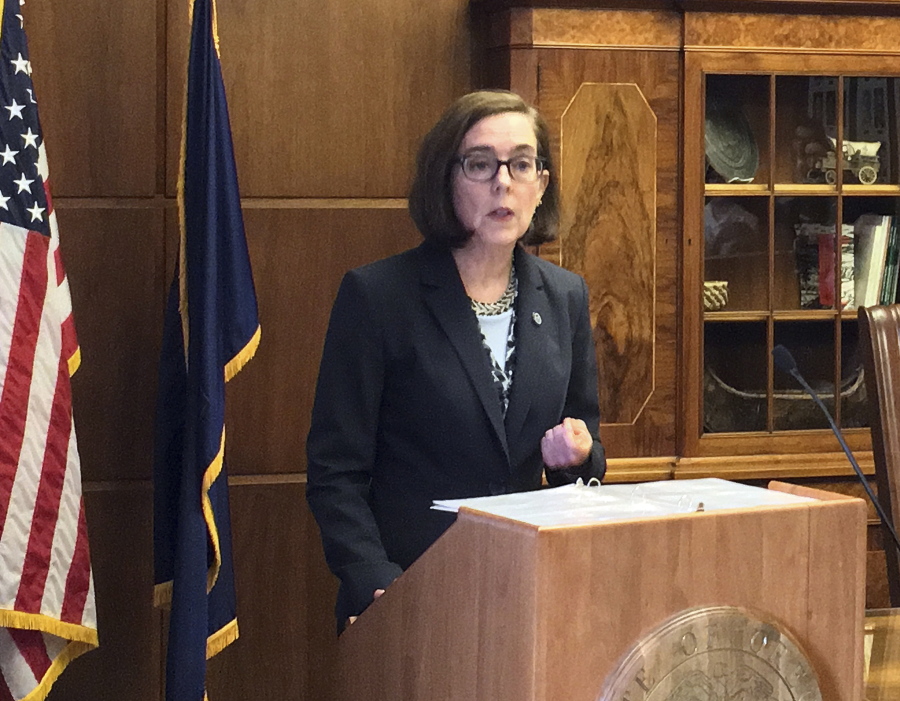SALEM, Ore. — Oregon Gov. Kate Brown announced two executive orders and a task force Thursday she says will help cut back on salary, retirement and health care costs for public employees and recover uncollected debt and taxes.
The actions came a week after Brown and her fellow Democrats who control both chambers in the Legislature began rolling out a series of spending-cut strategies — the potential cost savings from which are unclear — to address the state’s $1.6 billion budget shortfall.
Those efforts included Brown’s statewide hiring freeze for May and June, the last two months of the current budget, and lawmakers’ so-called “cost containment” proposal to extend that hiring freeze through the 2017-19 biennium, revise collective bargaining rules with labor unions and curb government health and pension costs.
As for this week’s actions, Brown ordered that, when in collective bargaining with labor unions, increases to employees’ total compensation in the Legislature’s budget include salary, cost-of-living and health care costs. State agencies must also ensure salaries are competitive, but also in line with other “comparable employers.”
Salary and benefit costs for public employees represented by labor unions could go up $145 million during the 2017-19 cycle when the deficit looms, although lawmakers are proposing scaling that back to $50 million, according to a recent Ways and Means Co-Chair report.
In remarks Thursday, Brown said the order is similar to what “private employers do. These are things we have done on and off as a state. We must do them consistently.”
Another order being signed next week directs state agencies to come up with ways to recover the state’s $3.3 billion in uncollected debt, partially from unpaid taxes. Brown also directed the creation of a new task force that, by Nov. 1, will report back to the state ways to shave $5 billion from the public pension system’s $22 billion unfunded liability.
In addition to cutting costs, a corporate-tax hike proposal will be drafted by the 14-member Joint Tax Reform Committee that was formed Wednesday.
While there’s general consensus that the deficit should be addressed through both spending cuts and new revenue, Democrats, who say corporate taxes are too low, and Republicans, who say government spending is too high, are at odds as to how those should be balanced.
Brown addressed this tension in her remarks Thursday, saying the “relationship between taxpayers, state government, and public employees is challenged right now. But this relationship — this social compact — is core to our society … we need to manage our expenses, but we also need stable and adequate revenue for essential services.”



